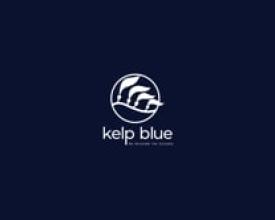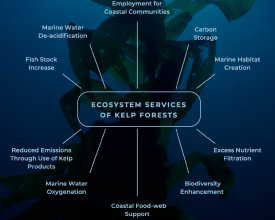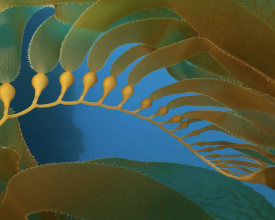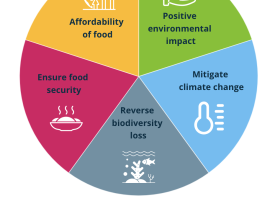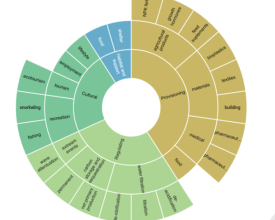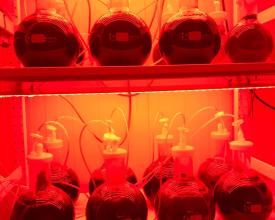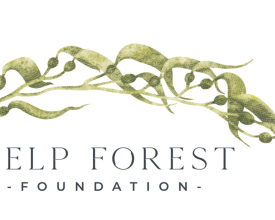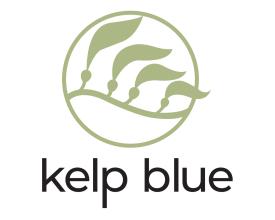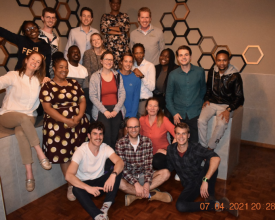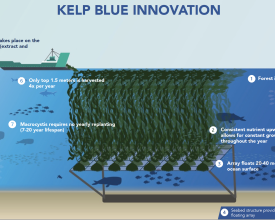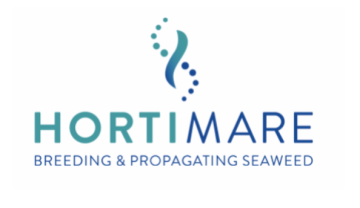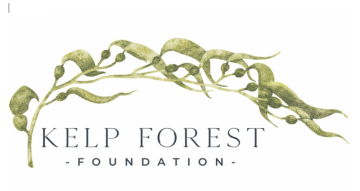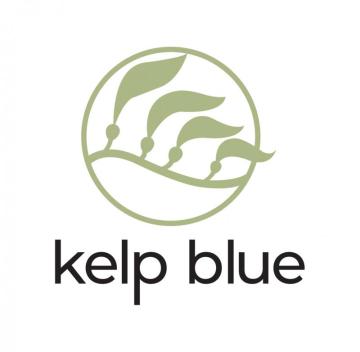
Kelp Blue

At Kelp Blue we grow Giant Kelp forests, at scale, to restore ocean health and fix our climate. We are removing barriers to scale of seaweed farming by:
• Cultivating offshore (5-10km) in order not to compete with costal ecosystems,
• Choosing a species not requiring annual re-planting,
• Only harvesting the canopy of the macroalgae, allowing us to harvest multiple times per year while leaving the bulk of the organism to support a healthy and thriving the marine biosystem.
Contexte
Challenges addressed
As with all innovations, our greatest challenge is helping people overcome their fear of the unknown; synthesising a big idea into an understandable, relatable story. Kelp Blue is looking to grow giant kelp forests at a scale that has never been done before. Some of the fears include: that the pilot farm will show that it is not viable to grown giant kelp offshore, off man-made structures; that the ecosystem benefits of cultivated giant kelp forests prove much lower than expected; that this type of cultivation proves to have unexpected adverse impacts.
All these challenges have low probabilities but they do exist and will determine the future of the project and this nascent sector, so they will be carefully monitored.
Emplacement
Traiter
Summary of the process
Kelp Blue has designed an innovative structure to enable offshore cultivation of giant kelp. But off these structures "baby" kelp need to be able to grow despite the rough offshore conditions. To increase their chance of survival in the open sea the kelp seedlings are cultivated in a hatchery, in an artifically controlled environment. A hatchery is used to germinate seaweed spores and to culture the subsequent kelp gametophytes and sporophytes prior to sea-deployment of the kelp seedlings on the racket-like structure. Without the hatchery the chance of sucess of the giant kelp farm would be very low.
The quantification of the climate services of cultivated kelp forests are not fully known. The Kelp Forest Foundation will be co-funding focused research in independently and transparently measuring the ecosystem services of giant kelp farms (CO2 sequestration, ocean de-acidification, biodiversity and fish stock boost, etc) . This research will be publically shared and will help not only raise awareness of this powerful nature based solution but also entice future kelp farmers and policy makers to help scale this solution.
Building Blocks
Hortimare - an essential partner for Kelp Blue.
Hortimare, a Dutch-based company, is one of the few companies in the world specialising in the genetics, breeding and propagating of seaweed. Hortimare works with Kelp Blue to create starting material, increase yield and research on best growing techiniques of the Macrocystis pyrifera specie.
Enabling factors
Holtimare has a state-of- the art lab in The Netherlands as well as a highly trained experienced team which specializes in seaweed breeding and propagating. Hortimare is an external technical consultant that is helping Kelp Blue set up and develop a hatchery in Namibia and to train a local workforce to run it. They also work together with Kelp Blue in sourcing, collecting and cultivation methods. They are also co-creating a giant kelp seedbank for future use.
Lesson learned
The breeding of kelp seedlings is an essential first step in the cultivation of seaweed. There is no public Macrocystis seed bank so Kelp Blue has had to work with partners around the world to sustainably collect spores from wild kelp beds and transport them back to The Netherlands where Hortimare then optimizes Kelp Blue's hatchery system and seeding technique to get to predictable and consistent yield. They share all the information that is needed to make the farm successful. This as a win-win for both parties. Hortimare gets more and more reliable data and knowledge to be able to develop a certain standard and Kelp Blue can translate their findings to predictability of operation.
Sustainably sourcing material, a breeding programme and a property set up hatchery are the cornerstone of any seweed farmer's project.
Resources
Kelp Forest Foundation - filling the gap in the science around cultivated kelp forest
Giant kelp is drastically understudied given the benefits it can deliver. The promise of cultivated kelp and its ecosystem services need to be quantified and unlocked to speed up the expansion of kelp cultivation at scale. This will help mitigate climate change and create sustainable products which will displace the current more environmentally damaging products.
The Kelp Forest Foundation was set up to help address the gap in science and knowledge around giant kelp forests’ ecosystem services – and to ensure this new knowledge is publicly available to companies, governments, regulators, not-for-profits, academics, and other stakeholders in order to accelerate the awareness and application of cultivated kelp forests as a powerful nature-based solution.
Enabling factors
The initial research will be undertaken in and around the Kelp Blue' s cultivated offshore kelp forests in Namibia but later on it will continue in other global locations.
The foundation will be adding to the research done by other organizations such as Oceans 2050 and Bigelow Laboratory. KFF will sponsor MSc's and PhD's from Namiban universities such as UNAM and NUST and is working with international universities such as University of Cambridge, University of Portsmouth, Utrecht university to create carbon pathway models and co-supervise students.
Lesson learned
It is important to prioritize the most important questions first and focus resources towards answering them.
Accessing ocean-based technology to collect the relevant data which is both user-friendly and affordable can be challenging.
Resources
Kelp Blue
Kelp Blue is a commecial entitiy founded by Daniel Hooft in February 2020. Its business headquarters are in Zeist, The Netherlands. It has a subsidiary in Namibia with operational headquarters in Luderitz, Nambibia. At the moment it employs 12 full time employees, 5 part-time employees and 4 interns. The gender balance is 50% female, 50% male. Its mission is "to rewild the oceans by cultivating giant kelp forests"
Enabling factors
Kelp Blue focused first on its MISSION. Next we needed to find FUNDING. We obtained in-pinciple funding from Climate Investor Two and Eos Capital for USD $60million.
At the same time we have built a strong competent multi-disciplinary TEAM with deep experience in multiple industries. Each of us brings our own learnings and unique skills to the table; this means we can take advantage of different perspectives and best practices as we look to grow Kelp Blue.
Lesson learned
Always focus on your mission - it will dictate all of the decisions you from whom you employ, the selection of suppliers and even your processing techniques.
Having stong funding partners with the same vision is key.
Don't underestimate the time and energy fundraising takes, start at least 6 months before you really need the funds.
Impacts
Kelp forest cultivation:
• Increases biodiversity (kelp is an ecosystem engineer, where there is kelp, there is life);
• Sequesters carbon (kelp forests are more effective than terrestrial forest at sequestering CO2);
• Revives the ocean by de-acidifying the water (kelp absorbs CO2 and rebalances the pH in the water);
• The products made from the harvested kelp (only the canopy will be harvested) will provide a direct advantage over more environmentally damaging alternatives. Our products reduce the need for chemical fertilisers, pesticides, antibiotics and fossil based plastics;
• Local fish stocks could increase between 10% and 20% benefitting local fishermen;
• Direct economic impact: our array building, harvesting and processing capabilities will directly benefit vulnerable coastal populations with:
-
skills development in new practices
-
formal and hands-on training
-
job creation
-
employment diversification
-
technical interventions in building and maintaining a new structure for seaweed cultivation
• Associated indirect economic diversification
-
Potential for Offshore Kelp Forest tourism
-
Structures can support additional high-value, aquaculture (e.g. scallops, oysters, mussels),
-
Structures can support targeted high-value line-fishing,
-
Processing potentially produces agricultural grade fresh water that could be used in small-scale fruit & vegetable farming
Beneficiaries
Planet - carbon removal
Ocean Health - water deacidification
Biodiversity - creation of habitat
Coastal communities - employment
Agricultural community - biostimulants will provide a nature friendly alternative to chemical feltilizers
Sustainable Development Goals
Story
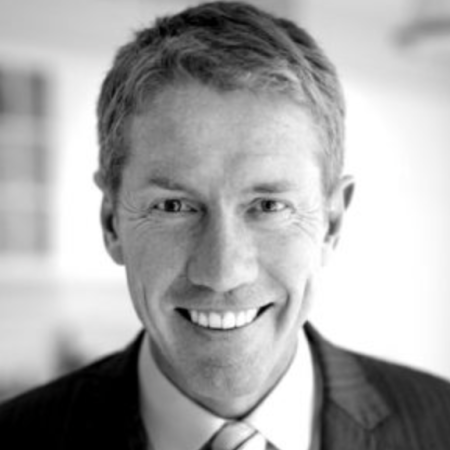
Daniel Hooft, Kelp Blue's founder, worked for over 20 years as an offshore oil and gas engineer for an international company. He has four children and has lived and worked around the world. Whilst living in Australia he came across Australian naturalist, Tim Flannery, a leading voice on climate change. In one of his talks, Professor Flannery explained that we have a brief window in which we urgently need to not only cut emissions, but also get some of the pollutants out of the atmosphere, which is a very difficult job. Planting trees, although he believes is a very good thing, is not enough. The scale and urgency of climate change is so big that this alone will not solve it. Since seaweeds capture carbon very rapidly (they are the fatest growing plants we know), Flannery explained that growing seaweed at a large scale could be one of the most effective biological systems to reduce CO2 that we have today.
But seaweed cultivation at a scale that is impactful needs to take place offshore (since coastal areas are too crowded by other activities). Offshore cultivation is difficult and needs innovative engineering. Daniel, inspired by Flannery, quit his job and used his offshore engineering experience to design a structure that could be used far away from the coast. He then focused on understanding how to grow the biggest plant, Macrocystis pyrifera (otherwise known as giant kelp), in the ocean. Hooft founded Kelp Blue with a vision of leaving the planet a better place for his four children and all future generations. He rose to Flannery's challenge to enhance the power of "ocean sequestration" through seaweed cultivation at scale.

